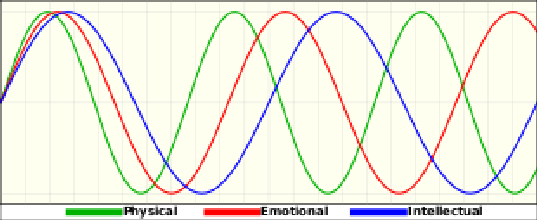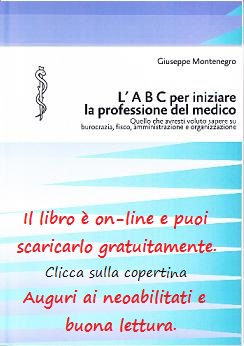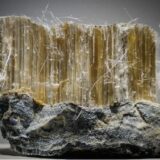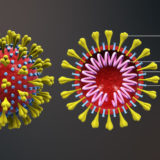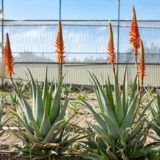Covid-19, DRASTIC il team che ricerca la verità

Pubblicato su “Newsweek” un articolo di Rowan Jacobsen sul gruppo Drastic che con la sua attività di ricerca documentale ha indotto molti degli scienziati a rivedere la propria posizione sulla origine della malefica pandemia da Covid-19.
Nel sucitato articolo, di cui si riportano alcuni passaggi, è descritta come la voglia di verità, foraggiata dai dubbi e dai silenzi delle autorità cinesi, e non solo, abbia innescato una ricerca condivisa tra persone che prima non si conoscevano ma che hanno trovato un comune interesse.
Per la maggior parte dello scorso anno, l’idea che la pandemia di coronavirus possa essere stata innescata da un incidente di laboratorio a Wuhan, in Cina, è stata ampiamente respinta come una teoria della cospirazione razzista dell’alt-right… Ma nell’ultima settimana o giù di lì, la storia è esplosa nel dibattito pubblico. Il presidente Joe Biden ha chiesto un’indagine da parte dell’intelligence statunitense. E i media mainstream, in un sorprendente voltafaccia, stanno trattando la possibilità con serietà mortale.
La ragione dell’improvviso cambiamento di atteggiamento è chiara: nel corso delle settimane e dei mesi della pandemia, l’accumulo di prove circostanziali che indicavano il laboratorio di Wuhan ha continuato a crescere, fino a quando non è diventato troppo sostanziale per essere ignorato.
Autori di questo lavoro di ricerca, durante la pandemia, sono circa due dozzine di corrispondenti, molti anonimi, che lavorano indipendentemente da molti paesi diversi mettendo insieme le informazioni e relazionando tutto in lunghi thread su Twitter, in una sorta di open source. A poco a poco, la qualità della loro ricerca e il rigore del loro pensiero hanno attirato un seguito più ampio, compresi molti scienziati e giornalisti professionisti. Si chiamano DRASTIC (Decentralized Radical Autonomous Search Team investigating Covid-19), gruppo multidisciplinare che comprende biologi, specialisti in genetica, ingegneri con conoscenze di costruzione e manutenzione di laboratori, specialisti di dati, profili di analisti, specialisti di dati aperti, specialisti culturali.
The Seeker, giovane indiano di 20 anni, vive da qualche parte nell’India orientale e usa un’opera d’arte tribale della sua regione natale del Bengala occidentale per il suo logo Twitter: un esperto nel cercare nei vicoli del web informazioni su qualunque argomento lo interessasse.
Yuri Deigin, CEO presso Youthereum Genetics, i suoi sospetti iniziarono da un articolo di Shi Zhengli che citava un virus denominato RaTG13, simile nella composizione genetica a SARS-CoV-2, rendendolo l’unico parente stretto conosciuto all’epoca.
Rossana Segreto, microbiologa dell’Università di Innsbruck.
Billy Bostickson, anonimo la cui icona di Twitter è una scimmia da laboratorio malconcia.
Francisco de Asis de Ribera, uno scienziato di dati di Madrid che eccelle nell’estrazione di grandi set di dati. Esaminando alcuni tag di metadati che erano stati caricati accidentalmente dal WIV insieme alle sue sequenze genetiche per RaTG13, Ribera ha scoperto che gli scienziati del laboratorio avevano effettivamente studiato attivamente il virus nel 2017 e nel 2018.
Mona Rahalkar, microbiologa dell’Agharkar Research Institute in India.
Alina Chan, una biologa molecolare presso il Broad Institute del MIT e di Harvard che ha riconosciuto il valore delle informazioni che DRASTIC stava producendo e ha iniziato a interpretarlo per scienziati e non scienziati in spietate spiegazioni su Twitter che l’hanno resa una stella della comunicazione scientifica.
Rodolphe de Maistre, anonimo.
Gilles Demaneuf, scienziato di dati presso la Bank of New Zealand ad Auckland.
André Goffinet, professore all’Istituto di Neuroscienze di Lovanio, in Belgio.
Tutte le prove di DRASTIC hanno prodotto punti nella stessa direzione: l’Istituto di virologia di Wuhan ha trascorso anni a raccogliere pericolosi coronavirus, alcuni dei quali non sono mai stati rivelati al mondo. Stava testando attivamente questi virus per determinare la loro capacità di infettare le persone, nonché quali mutazioni potrebbero essere necessarie per migliorare tale capacità, probabilmente con l’obiettivo finale di produrre un vaccino che proteggesse da tutti loro.
All’inizio del 2021, DRASTIC aveva prodotto così tante informazioni che nessuno poteva tenere il passo, nemmeno i propri ricercatori, quindi ha lanciato il proprio sito Web come repository. Il sito contiene abbastanza articoli scientifici, thread di Twitter, traduzioni di documenti cinesi e collegamenti ad articoli per tenere occupato per mesi un curioso gumshoe.
Il virologo dell’Università di Washington Jesse Bloom, uno dei ricercatori COVID-19 più rispettati del paese, è diventato la prima grande figura scientifica a legittimare pubblicamente i contributi di DRASTIC. “Pensavo che la fuga dal laboratorio fosse molto improbabile… ora dico abbastanza plausibile“.
L’articolo completo al link: https://www.newsweek.com/exclusive-how-amateur-sleuths-broke-wuhan-lab-story-embarrassed-media-1596958

Quest’opera è distribuita con Licenza Creative Commons Attribuzione – Non commerciale – Condividi allo stesso modo 4.0 Internazionale
English version
Covid-19, Drastic the team that seeks the truth
An article by Rowan Jacobsen on the Drastic group published in “Newsweek” which, with its documentary research activity, has induced many of the scientists to review their position on the origin of the evil pandemic from Covid-19.
In the aforementioned article, some passages of which are reported, it is described how the desire for truth, fostered by the doubts and silences of the Chinese authorities, and not only, has triggered a shared search between people who previously did not know each other but who have found a common interest.
For most of last year, the idea that the coronavirus pandemic may have been triggered by a laboratory accident in Wuhan, China, has been widely dismissed as an alt-right racist conspiracy theory … But in the last week or so, the story has exploded into public debate. President Joe Biden has called for an investigation by US intelligence. And the mainstream media, in a surprising turnaround, is treating the possibility with deadly seriousness.
The reason for the sudden change in attitude is clear: over the weeks and months of the pandemic, the accumulation of circumstantial evidence pointing to the Wuhan laboratory continued to grow, until it became too substantial to ignore.
The authors of this research work, during the pandemic, are about two dozen correspondents, many anonymous, who work independently from many different countries, putting together the information and relating everything in long threads on Twitter, in a sort of open source. Gradually, the quality of their research and the rigor of their thinking have attracted a wider following, including many professional scientists and journalists. They are called DRASTIC (Decentralized Radical Autonomous Search Team investigating Covid-19), a multidisciplinary group that includes biologists, genetics specialists, engineers with knowledge of building and maintaining laboratories, data specialists, analyst profiles, open data specialists, cultural specialists .
The Seeker, a young 20-year-old Indian, lives somewhere in eastern India and uses a tribal artwork from his native West Bengal region for his Twitter logo: an expert in searching the web for information on anything topic interested him.
Yuri Deigin, CEO at Youthereum Genetics, his suspicions began with an article by Shi Zhengli citing a virus called RaTG13, similar in genetic makeup to SARS-CoV-2, making it the only close relative known at the time.
Rossana Segreto, microbiologist at the University of Innsbruck.
Billy Bostickson, anonymous whose Twitter icon is a battered lab monkey.
Francisco de Asis de Ribera, a data scientist from Madrid who excels at extracting large data sets. By examining some metadata tags that had been accidentally loaded by the WIV along with its genetic sequences for RaTG13, Ribera found that scientists from the lab had actually actively studied the virus in 2017 and 2018.
Mona Rahalkar, microbiologist at the Agharkar Research Institute in India.
Alina Chan, a molecular biologist at the Broad Institute of MIT and Harvard who recognized the value of the information DRASTIC was producing and began interpreting it for scientists and non-scientists in ruthless explanations on Twitter that made her a communications star scientific.
Rodolphe de Maistre, anonymous.
Gilles Demaneuf, data scientist at the Bank of New Zealand in Auckland.
André Goffinet, professor at the Institute of Neuroscience of Leuven, Belgium.
All of DRASTIC’s evidence has produced points in the same direction: The Wuhan Institute of Virology has spent years collecting dangerous coronaviruses, some of which have never been revealed to the world. He was actively testing these viruses to determine their ability to infect people, as well as what mutations might be needed to improve that ability, likely with the ultimate goal of producing a vaccine that protected against all of them.
By early 2021, DRASTIC had produced so much information that no one could keep up, not even its own researchers, so it launched its own website as a repository. The site contains enough scientific articles, Twitter threads, translations of Chinese documents, and links to articles to keep a curious gumshoe busy for months.
University of Washington virologist Jesse Bloom, one of the most respected COVID-19 researchers in the country, has become the first major scientific figure to publicly legitimize DRASTIC’s contributions. “I thought the escape from the laboratory was very unlikely … now I say quite plausible.”
The full article at the link: https://www.newsweek.com/exclusive-how-amateur-sleuths-broke-wuhan-lab-story-embarrassed-media-1596958









